#National Film Board of Canada
Text
Hunger (La faim) | Director: Peter Foldes
Studio: National Film Board of Canada | CA, 1974
#Hunger#CGI#NFB#National Film Board of Canada#Animation#Peter Foldes#Gluttony#Computer Animation#Canada#La Faim#Surreal#Greed
78 notes
·
View notes
Text

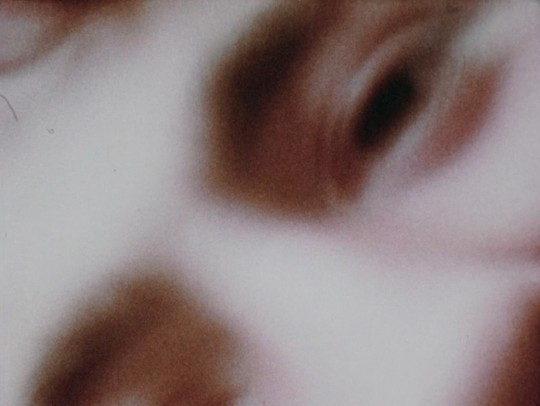
Christopher's Movie Matinee (1968), dir. Mort Ransen
#Christopher's Movie Matinee#Mort Ransen#cinéma vérité#1960s#1968#documentary#national film board of canada#canadian cinema
239 notes
·
View notes
Text

You’ll Be Climbing The Walls “Get A Job” (1985)
25 notes
·
View notes
Text
youtube
L'heure des anges (AKA: Nightangel), a film by Jacques Drouin and Břetislav Pojar
#movie#short#short film#animation#jacques drouin#břetislav pojar#bretislav pojar#national film board of canada#miroslav kuchar#robert forget#vera henzlova#michael kocáb#vladimír malík#vera yurtchuk#ivo spalj#pražský komorní orchestr#vlasta pospíšilová#nfb#alfons mensdorff pouilly#jan klos#Youtube
39 notes
·
View notes
Text
youtube
Une leçon de chasse (A Hunting Lesson), short film by Jacques Drouin
#film#national film board of canada#short film#animation#nfb#jacques drouin#onf#jacques godbout#Youtube
26 notes
·
View notes
Text
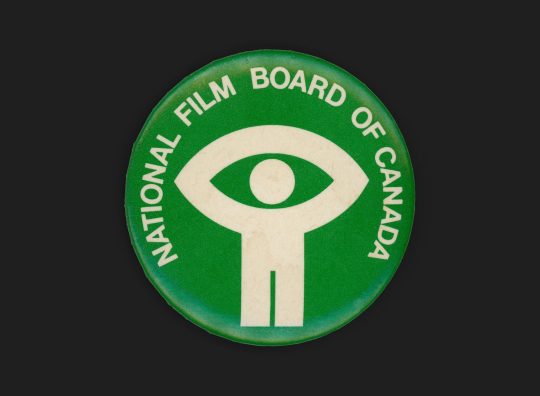
A badge of the National Film Board Of Canada. Electronic act Boards Of Canada credits them for their name and as an influence of their sound.
46 notes
·
View notes
Photo

National Film Board of Canada
The Light Fantastick
1974
260 notes
·
View notes
Text
youtube
Pen Point Percussion - Norman McLaren (1951)
13 notes
·
View notes
Photo





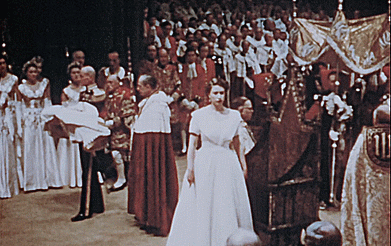



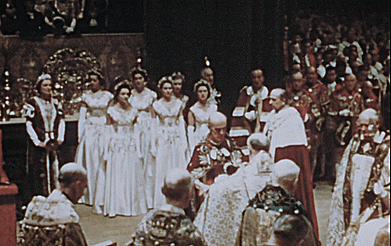
Canada at the Coronation (1953, National Film Board of Canada)
Queen Elizabeth II and Prince Philip arrive at the Coronation rehearsal
Queen Elizabeth The Queen Mother greets dignitaries from around the world at Hatfield House, including Louis St. Laurent, the 12th Prime Minister of Canada
Prince Philip inspects the RCAF and the Canadian Army
The Coronation
#queen elizabeth ii#prince philip duke of edinburgh#coronation#queen elizabeth the queen mother#coronation rehearsal#coronation of queen elizabeth ii#national film board of canada
24 notes
·
View notes
Text

“Caps” Caribana, Toronto Island, 1972 by Joan Latchford
Many of Joan Latchford’s photographs from this period focus on the city’s Black communities, especially new Caribbean immigrants. Five of Latchford’s adopted children were Black, and she went on to study Afro-American culture and anthropology at Howard University.
#saresmusings#caps#caribana#Toronto Island#1972#Joan latchford#toronto#photography#blackandwhite#black pride#caribana festival#vintagetoronto#photojournalism#1970's#caribbean#Toronto immigrants#the cardinal gallery#toronto photography#nun#national film board of canada#for you page
12 notes
·
View notes
Text

Christopher's Movie Matinee (1968), dir. Mort Ransen
#Christopher's Movie Matinee#Mort Ransen#1960s#1968#documentary#national film board of canada#cinéma vérité#canadian cinema
115 notes
·
View notes
Photo

Take your pick of videotapes for rent from an automatic vending machine. That's what Darlene Mathews is using a bank card for at Thornhill Community Centre. 1988. [TPL Archive]
#1980s#1988#vending machine#VHS#video renting machine#1980s redbox#National Film Board of Canada#people#Hide and Queue
14 notes
·
View notes
Text
youtube
Antagonia, a short film by Nicolas Brault
#somethingneweveryday#short#short film#film#nicolas brault#animation#nfb#national film board of canada#denis chartrand#serge boivin#marc bertrand#josé heppell#normand roger#susan gourley#pierre plouffe#penguin#michèle bélanger#denis l. chartrand#pierre yves drapeau#jean paul vialard#movie#Youtube
26 notes
·
View notes
Video
youtube
My Macondo, a documentary by Dan Weldon
#video#documentary#NFB#dan weldon#macondo#gabriel garcía márquez#gabriel garcia marquez#julio roca#colombia#chiquita#banana massacre#united fruit company#national film board of canada#guillermo henriquez#ciquita
21 notes
·
View notes
Text

An NFB ad from an early issue of Take One magazine.
#canada#1960s#ephemera#graphic design#vintage magazines#nostalgia#film#NFB#national film board of canada#take one
8 notes
·
View notes
Photo


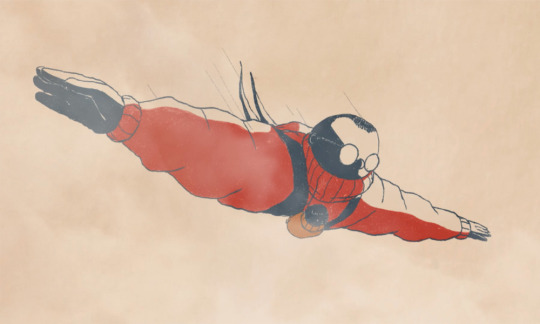


Best Animated Short Film Nominees for the 95th Academy Awards (2023, listed in order of appearance in the shorts package)
This blog, since 2013, has been the site of my write-ups to the Oscar-nominated short film packages – a personal tradition for myself and for this blog. This omnibus write-up goes with my thanks to the Regency South Coast Village in Santa Ana, California for providing all three Oscar-nominated short film packages. Without further ado, here are the nominees for the Best Animated Short Film at this year’s Academy Awards. The write-ups for the Documentary Short and Live Action Short nominees are complete. Films predominantly in a language other than English (or in two cases here, with dialogue) are listed with their nation(s) of origin.
So completes this year’s omnibus write-ups for the Oscar-nominated short films.
An Ostrich Told Me the World is Fake and I Think I Believe It (2021)
In 1953, director Chuck Jones tortured Daffy Duck with the whims of an unseen animator (revealed to be Bugs Bunny) in Duck Amuck. Fast forward almost seventy years and a film of a similar concept comes in Lachlan Pendragon’s An Ostrich Told Me the World is Fake and I Think I Believe It. Pendragon, who directed, wrote, animated, and voiced the main character this film as an undergraduate student at the Griffith Film School in Brisbane (where he is now a PhD candidate), frames hapless toaster telemarketing salesman Neil as under fire from his boss (Michael Richard) due to a lack of sales. As the workday continues, he begins to notice peculiar aspects of his fellow coworkers and the office that make him question what is going on. Accidentally sleeping at work through the night, he encounters an ostrich (John Cavanagh) in the elevator who then claims the world Neil lives in is, “a lie”. What follows is a meta-breaking, existential short film deriving its comedy from the character’s realization of the stop-motion artifice of his life.
A winner of the Student Academy Award from last year and a nominee for Best Graduation Film at Annecy (the premier animation-only film festival), Ostrich uses what I am assuming is Pendragon’s hand in place of Bugs Bunny’s glove and paintbrush. Shot entirely during the COVID-19 lockdown at home in the living room, this is a one-man animation job. For most of its ten-minute runtime, the viewers see the film through an in-film camera monitor – allowing us into Pendragon’s workspace. Meanwhile, in the background that comprises the margins of the frame, we witness the rigging, wiring, and animation handiwork that is occurring at twenty-four frames per second. The impressive character design and the clearly-delineated pop-off faces and jaws provide a remarkable assist to Ostrich’s comic timing and Neil’s acting (which Pendragon admits that Neil’s reactions take inspiration his own behavioral habits). The film’s metaphor is perhaps not as well developed, but one can make the argument that Ostrich is a blistering take on this stifling office environment and champions an exploration and investigation of all possibilities in one’s earthly life and in existence. One imagines we will see more from Pendragon, who is at the very beginning of his career and wishes to make a feature someday.
My rating: 8/10
The Flying Sailor (2022, Canada)
Making its debut last year at Annecy and from National Film Board of Canada (NFB; who, as a studio, are the second-most nominated ever in this category behind Walt Disney Animation), Wendy Tilby and Amanda Forbis’ The Flying Sailor is an experimental take of the story of Charlie Mayers. On December 6, 1917, a French cargo ship and a Norwegian merchant vessel collided in a strait called the Narrows, just off Halifax, Nova Scotia. A fire began on the former ship, which carried with it high explosives. The resulting explosion was the most violent peacetime accidental explosion ever on Earth – killing more than 1,700 and wounding around 9,000 in the immediate area and from the shockwaves. Mayers was actually onboard the deck of one of the ships, but Tilby and Forbis move him to the docks, watching on as an inquisitive spectator instead. As in real life, the blast is enough to quickly tear off all his clothes, and he spirals skyward. It is here that Tilby and Forbis send Mayers flying in slow-motion, almost balletically spinning as the film delves into his unconsciousness.
His life flashing before his eyes, we see hazy glimpses of the sailor’s memories – his childhood self at play, his mother, the rough-and-tumble life of being a sailor. Along with My Year of Dicks, The Flying Sailor is one of the first films in this category to make use of mixed media since Mémorable (2019, France). It opens with juxtaposing our hand-drawn sailor with the ships – as if in the style of the opening of Mister Rogers’ Neighborhood – hurtling towards each other. But once the explosion occurs, the film, too, explodes with a clash of styles. Showcasing hand-drawn, computer-generated, and live action footage, Tilby and Forbis’ choices are reflective of the instant disorientation following the blast. The film’s penultimate moments are an orchestral cacophony from composer Luigi Allemano as the sailor returns to our earthly existence. This is perhaps the only film of these five that absolutely needed to be a short film. It presents its direction, completes its business, and concludes.
My rating: 8/10
Ice Merchants (2022, Portugal)
By earning Portugal its first-ever Academy Award nomination, João Gonzalez’s Ice Merchants – a production of the Cola Animation collective – already has a place in Oscars history. In his third film as a director following The Voyager (2017) and Nestor (2019), Gonzalez transports audiences to an impossible, dreamlike place and imbues his film with a metaphor of loss and how family routines can be an extension of grief. In a cliffside house suspended by hooks and ropes live a father and his son. Living thousands of feet above the town below, they jump off their porch daily, parachuting to safety in order to sell the ice. They return home after selling their wares and purchasing whatever they need in town by using a pulley system that probably takes ages to ascend and descend. In the rarified, chilly air, father and son go about their lives peacefully, continuing their lives amid the shadow of loss.
Garnering award wins at Cannes, the Chicago International Film Festival, and the Annies, Ice Merchants is among the most-awarded short films ever prior to an Oscar nomination. According to Gonzalez, the idea of the cliffside house came as he was dreaming or was about to fall asleep – a development that has, thus far, fully informed the visual conceits of his entire filmography. Prior to starting the formal animation for Ice Merchants, Gonzalez himself modeled the entire house (including the swing, interiors, and pulley system) 3D and started composing the score (Gonzalez is a pianist, but required his friend, conductor/orchestrator Nuno Lobo, to transpose for various instruments). Unusual in that the film’s narrative and themes spring from the score rather than the other way around, Ice Merchants adopts an everyday melancholy reflected in its strikingly limited color palette. Those colors include shades of red, orange, a dark blue or green for backgrounds only, and two brief but noteworthy instances of yellow. All these decisions – visually, musically, narratively – combine in a breathtaking conclusion that unleashes a wave of emotions. That mastery of cinematic control leads me to write something longtime readers know I do not say lightly. Ice Merchants is the best nominee in this category since Bear Story (2014, Chile) and World of Tomorrow (2015) were nominated together seven years ago. By extension, it is one of the finest animated short films of the young century.
My rating: 9/10
The Boy, the Mole, the Fox and the Horse (2022)
Adapting Charlie Mackesy’s 2019 picture book of the same name, Peter Baynton and Mackesy’s The Boy, the Mole, the Fox and the Horse made an enormous splash when it aired on BBC One on Christmas Eve as part of the BBC’s annual slate of Christmas specials. It qualified for an Academy Award nomination by virtue of a nominal one-week theatrical release in Los Angeles County on September 23, 2022. Here, the Boy (Jude Coward Nicoll) has lost his way in a wintry forest when he encounters Mole (Tom Hollander). Mole is a cheerful, friendly sort that enjoys a good cake. But the Boy believes himself to be lost, is searching for a home, and wishes to be a kind person. Along their travels they encounter starving Fox (Idris Elba) and the lonely Horse (Gabriel Byrne). For the duration of this movie, the Boy and his animal friends speak to each other in platitudes of positivity, reassurance, and perseverance for what is most likely chronic depression or seasonal affective disorder.
The Boy might just be the most beautifully drawn of this year’s nominees. Its painterly watercolor backgrounds seem as lifted from a picture book; the residual sketches on each of the characters are a beautiful expressionistic touch (I especially like the ends of the Boy’s hair and Fox’s tale, as well as the curvatures to denote Horse’s leg musculature). My sense of visual wonder lasted all but five or so minutes. Because once the Boy has a few conversations with Mole, the film’s thirty-seven minutes seem all the more interminable. The film’s dialogue – and my goodness, no one speaks like this in real life – is trite, straight from the crowd that might have a “live, laugh, love” embroidery unironically hanging on their wall. Each character appears as if they are trying to one-up the other in their AI-generated speech*, as if each Very Important Line of Dialogue is attempting to be the penultimate or final line in a children’s picture book. I understand how this might be impactful for those with major cases of depression and seasonal affective disorder, but the film’s messaging and horrific script is sheer overkill.
My rating: 6/10
My Year of Dicks (2022)
A winner at Annecy, Chicago International Film Festival, and SXSW, Sara Gunnarsdóttir’s My Year of Dicks adapts Pamela Ribon’s comedic memoir Notes to Boys: And Other Things I Shouldn’t Share in Public (Ribon is the sole screenwriter on this film). This is not about people named Richard. It is 1991 in Houston. In the first of five chapters, we find Pam (Brie Tilton) – a fifteen-year-old who wants desperately to lose her virginity sometimes this year – narrating a diary entry/letter to her first boy, David (Sterling Temple Howard, “Skater Dude” from 2020’s Two Distant Strangers). David is a skater boy who has filed his nails into sharp points and his teeth in a similar way. As one can imagine, this romance does not work out and Pam cycles through the next four chapters awash in heterosexual hijinks (some readers will interpret the use of “heterosexual” here as a pejorative, but I say it as only an observation) with Wally (Mical Trejo), Robert (Sean Stack), best friend Sam (Jackson Kelly), and Joey (Chris Elsenbroek).
Alternatively hilarious and excruciating (see: the scene where Pam’s father gives her The Talk) to watch, one-half of the film’s genius lies in Ribon’s adapted screenplay of her memoir. Ribon (a co-screenwriter on 2016’s Moana and 2018’s Ralph Breaks the Internet), who saved all of the letters she wrote to all her crushes when she was a teenager, adapts that writing to form an honest, secondhand embarrassing story. The central ideas play like a grown-up Helga Pataki from Hey Arnold!, sans used gum bust of her beloved. My Year of Dicks’ resolution is genuine, as is a non-judgmental depiction of teenage female sexuality‡. In a roundabout way, it is a deconstruction of the idea that the only way for girls to achieve full womanhood is through sex and sexual appeal. And like The Flying Sailor, My Year of Dicks employs a litany of styles of mixed media that help it succeed. Though its rough rotoscoping (a time-tested technique in which animators trace over live-action footage) is the dominant style, there are some fascinating breaks here: most interestingly, a scene involving a metaphoric angel and devil over Pam’s shoulders and interludes of shôjo anime (which probably was not on the radar of Houston teenagers in 1991). A sidesplittingly funny film, My Year of Dicks nevertheless retains a sliver of nostalgic poignancy to keep it grounded.
My rating: 8/10
^ Based on my personal imdb rating. My interpretation of that ratings system can be found in the “Ratings system” page on my blog (as of July 1, 2020, tumblr is not permitting certain posts with links to appear on tag pages, so I cannot provide the URL).
From previous years: 85th Academy Awards (2013), 87th (2015), 88th (2016), 89th (2017), 90th (2018), 91st (2019), 92nd (2020), 93rd (2021), and 94th (2022).
* This begs a question. Should programmers of AI chatbots receive credit for their work when, inevitably, we have a film written by one?
‡ This line of thinking was certainly more prominent in the 1980s-2000s than it has been over the last decade, as teenage sex in the U.S. is down considerably from those times (the reasons are many).
For more of my reviews tagged “My Movie Odyssey”, check out the tag of the same name on my blog.
#An Ostrich Told Me the World is Fake and I Think I Believe It#The Flying Sailor#Ice Merchants#The Boy the Mole the Fox and the Horse#My Year of Dicks#Lachlan Pendragon#Amanda Forbis#Wendy Tilby#João Gonzalez#Peter Baynton#Charlie Mackesy#Sara Gunnarsdóttir#Pamela Ribon#National Film Board of Canada#NFB#BBC#95th Academy Awards#Oscars#31 Days of Oscar#My Movie Odyssey
3 notes
·
View notes